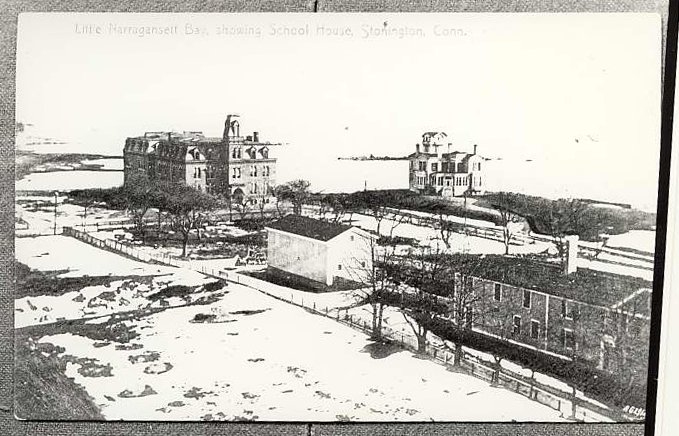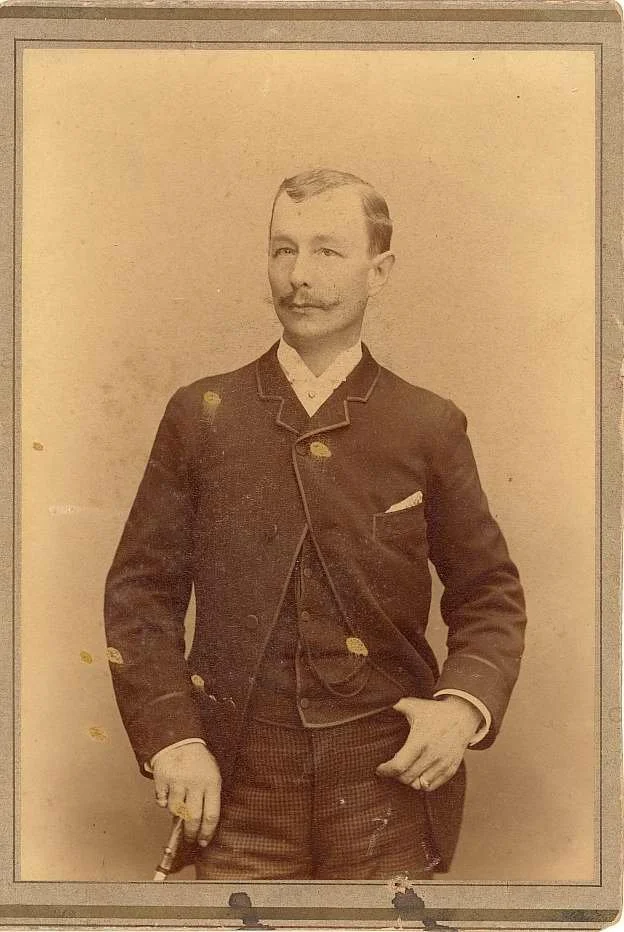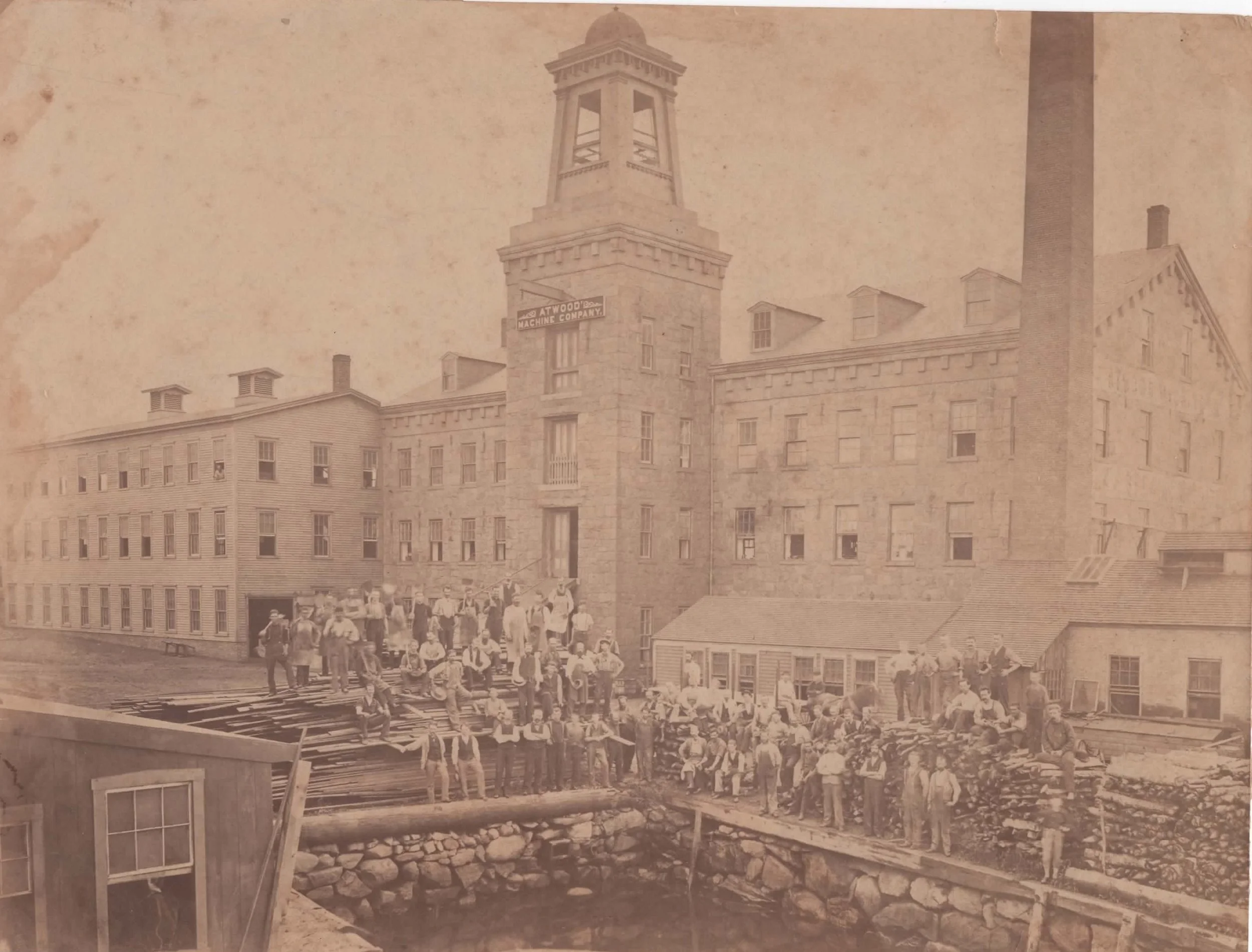The History of the "Mystic Pizza House"
By Chelsea Mitchell, Director of the Woolworth Library, Stonington Historical Society
It has become a question that everyone in the Borough has heard at one time or another on a busy holiday weekend, or a sleepy rainy fall day, “Where’s the house from Mystic Pizza?”
In 1987 the film, Mystic Pizza starring Julia Roberts, Vincent D’Onofrio, and Lili Taylor, was filmed in southeastern Connecticut. Keen eyes will spot Cannon Square, the NESS building, and Breakwater Restaurant, as well as Mystic Bridge, and Mechanic Street in Pawcatuck. “The house” is located at 53 Church Street, near the corner of Orchard Street, and in the movie is the home of Charlie (Adam Storke), the love interest of Daisy (Julia Roberts).
The original Atwood House built in 1871
View of the Borough School (left) and the original Atwood House (right)
The original house was built in 1871 by the Reverend Samuel Dexter Denison on the property that had belonged to his father, Samuel Fish Denison. The original home was Italian revival in style. Reverend S.D. Denison gave the land to the nearby Calvary Episcopal Church. He was ordained an Episcopal priest in 1846. After serving in the ministry in Rhode Island, Massachusetts, and Texas, he served as the Honorary Secretary of the Foreign Committee of the Board of Missions in New York City. He was invited to be rector at Calvary Church and began his term in January 1873, but he resigned five months later.
Eugene Atwood
By 1888, Mr. Eugene Atwood had purchased the property. Eugene Atwood learned the machinist trade as a young man and later entered into business with his father, the inventor John Atwood. Together they opened a machine shop in Atwoodville, near Willimantic, but when the building was destroyed by fire in 1875, the father and son team moved production to Stonington and founded the Atwood Machine Company on Water Street. Under his direction, the Atwood Machine Company became the largest silk machinery manufacturer in the world. Eugene Atwood died in 1926, and almost immediately the house was extensively renovated. Borough legend claims that Eugene didn’t like landscaping, and in early photographs of the house, the landscape is bare. When Eugene died in 1926, holes were being dug for the trees and shrubs which were ordered about the same time he was buried.
The Atwood Machine Company under construction
In 1926, the house had incorporated all the hallmarks of a colonial revival style – white clapboards, shutters, the wrap-around porch supported by Doric columns, and the balustrade walkway around the second floor reminiscent of “widow’s walks.” Brick and mortar were placed between the wooden beams in the 1926 renovation, and allegedly during the 1938 hurricane, the basement of the house did not flood an inch. The house has twelve rooms, ten of which offer views of Little Narragansett Bay. Inside, the house boasts seven marble fireplaces, French glass doors leading from the living room to a sun porch, a kitchen with a working dumbwaiter, a game room, a wet bar, a library, and an elevator.
In the 1970s, the house was home to Thomas L. Miller, an activist who was instrumental in declaring the islands south of Miami Beach a National Park. Miller was also present when President Lyndon B. Johnson signed the bill creating Biscayne Bay National Refuge. Notes in our archive document that the house was updated in 1976 and again in the mid-1990s, but without any details.
Other notable locations featured in the film Mystic Pizza include 70 Water Street, once home to Garbo Lobster and the current headquarters of NESS. In the film, this was the set of the pizza parlor. In a few scenes the Arcade, across the street, is visible. Daisy and Charlie drive by Cannon Square (and over the Mystic Bascule Bridge), and are seen eating in what is now the Breakwater Restaurant at 66 Water Street, which served as the Mystic River Yacht Club interior in the movie. Zack’s restaurant (once Ryan’s Pub), now closed, at 201 North Main Street just north of the viaduct served as the “Peg Leg Pub.”
For more information on this house and others in Stonington Borough, please contact the Librarian at the Stonington Historical Society, Chelsea Mitchell at cmitchell@stoningtonhistory.org.







